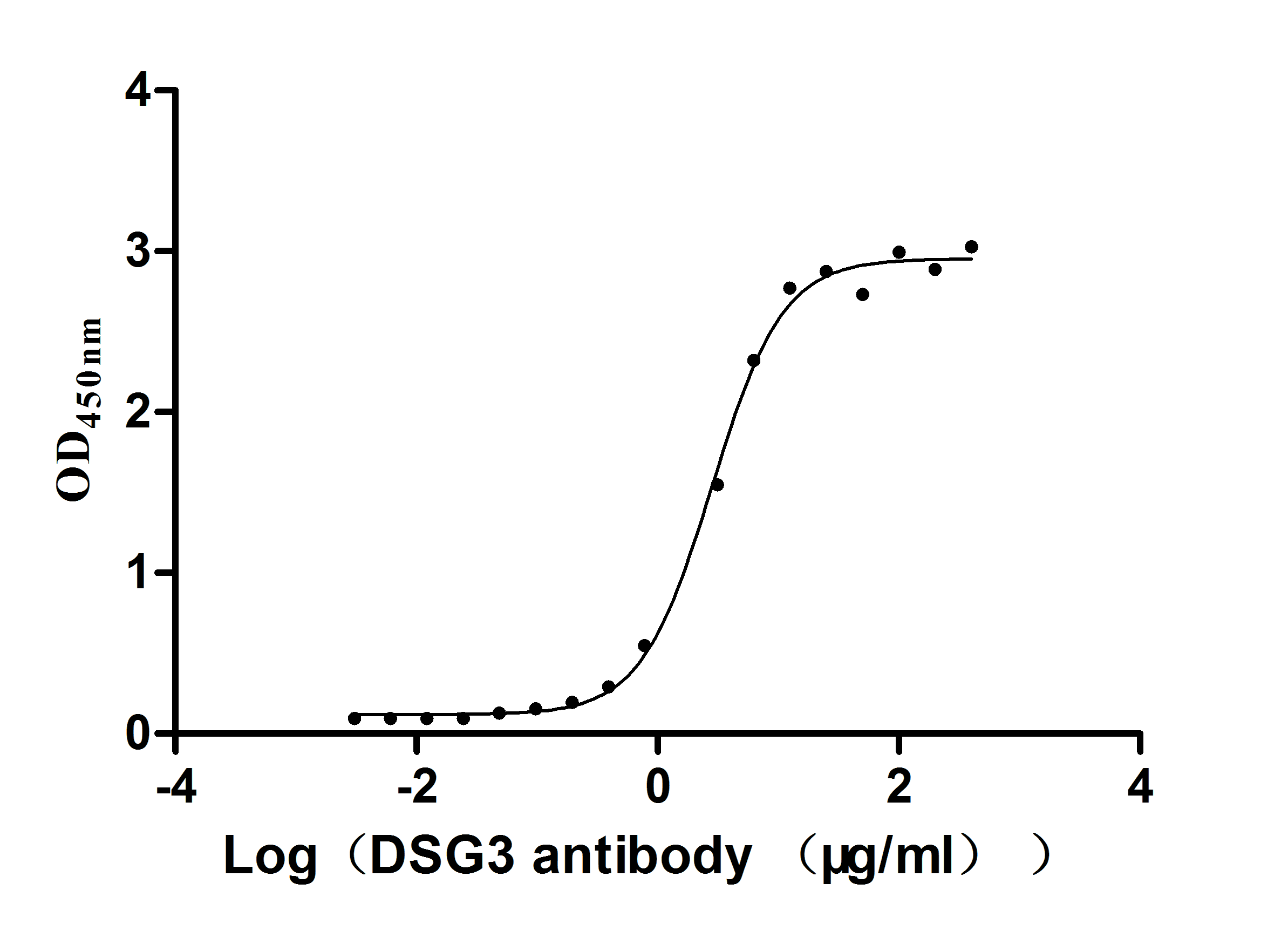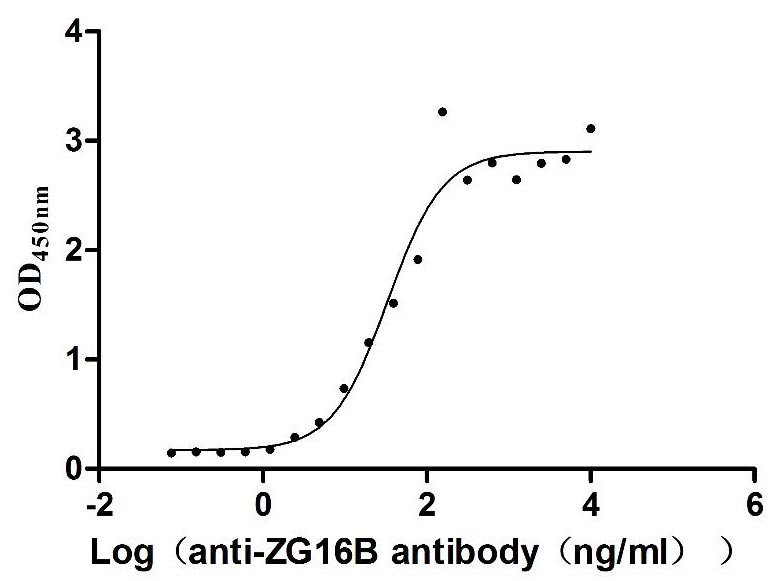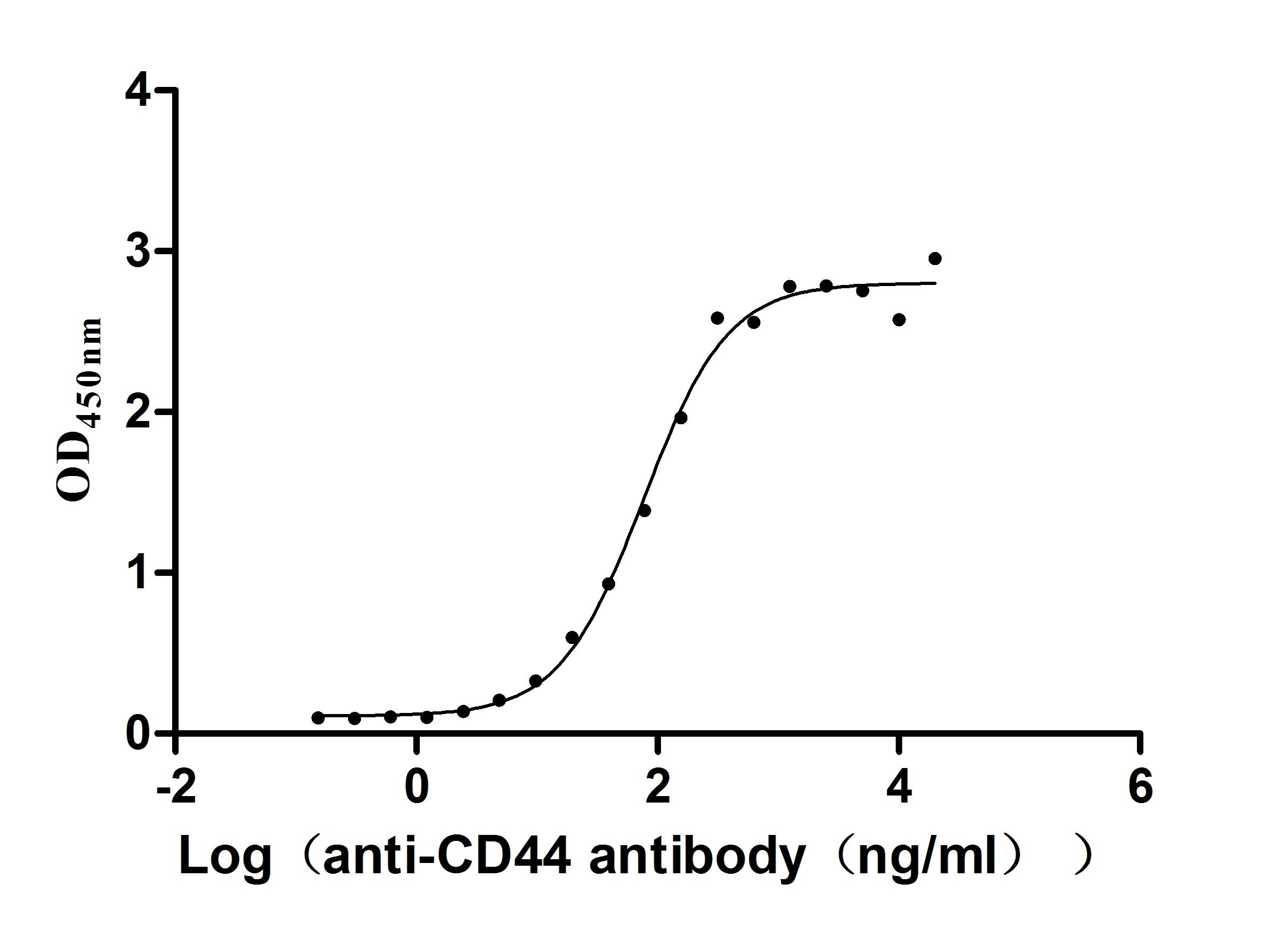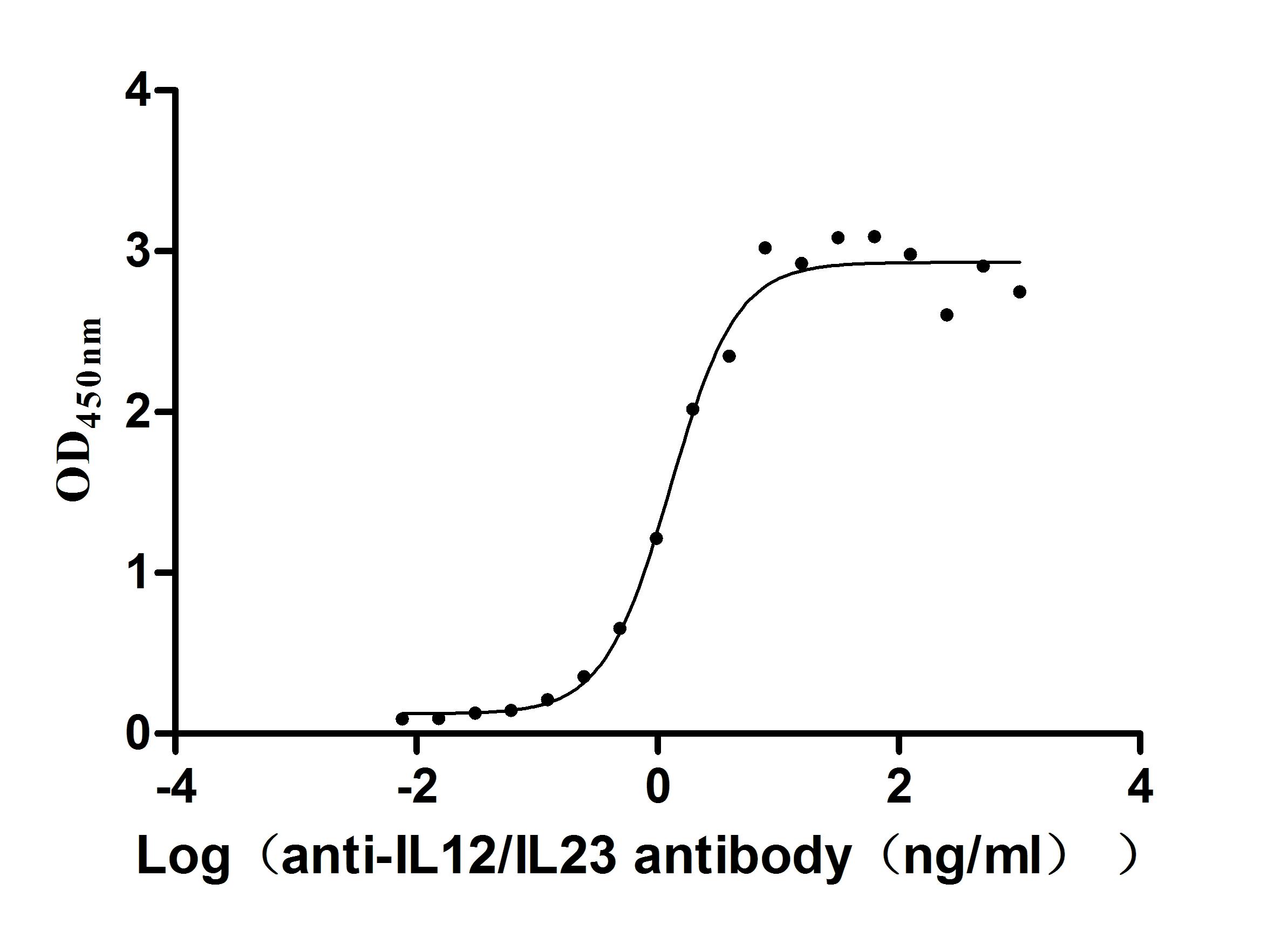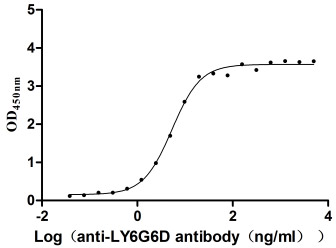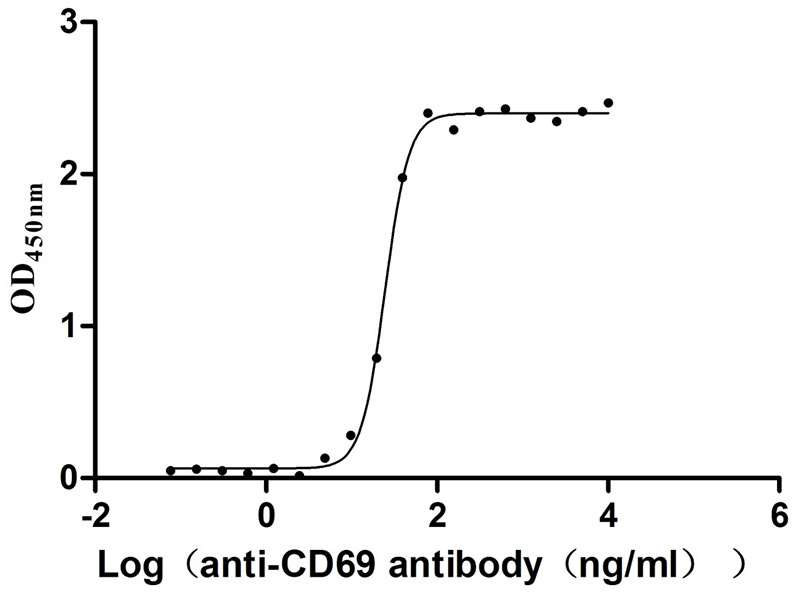Recombinant Mouse Serine/threonine-protein kinase Sgk3 (Sgk3)
-
中文名稱:小鼠Sgk3重組蛋白
-
貨號(hào):CSB-YP872130MO
-
規(guī)格:
-
來源:Yeast
-
其他:
-
中文名稱:小鼠Sgk3重組蛋白
-
貨號(hào):CSB-EP872130MO
-
規(guī)格:
-
來源:E.coli
-
其他:
-
中文名稱:小鼠Sgk3重組蛋白
-
貨號(hào):CSB-EP872130MO-B
-
規(guī)格:
-
來源:E.coli
-
共軛:Avi-tag Biotinylated
E. coli biotin ligase (BirA) is highly specific in covalently attaching biotin to the 15 amino acid AviTag peptide. This recombinant protein was biotinylated in vivo by AviTag-BirA technology, which method is BriA catalyzes amide linkage between the biotin and the specific lysine of the AviTag.
-
其他:
-
中文名稱:小鼠Sgk3重組蛋白
-
貨號(hào):CSB-BP872130MO
-
規(guī)格:
-
來源:Baculovirus
-
其他:
-
中文名稱:小鼠Sgk3重組蛋白
-
貨號(hào):CSB-MP872130MO
-
規(guī)格:
-
來源:Mammalian cell
-
其他:
產(chǎn)品詳情
-
純度:>85% (SDS-PAGE)
-
基因名:Sgk3
-
Uniprot No.:
-
別名:Sgk3; Cisk; Sgkl; Serine/threonine-protein kinase Sgk3; EC 2.7.11.1; Cytokine-independent survival kinase; Serum/glucocorticoid-regulated kinase 3; Serum/glucocorticoid-regulated kinase-like
-
種屬:Mus musculus (Mouse)
-
蛋白長(zhǎng)度:full length protein
-
表達(dá)區(qū)域:1-496
-
氨基酸序列MQRDCIMDYK ESCPSVSIPS SDEHREKKKR FTVYKVLVSV GRSEWFVFRR YAEFDKLYNS LKKQFPAMAL KIPAKRIFGD NFDPDFIKQR RAGLNEFIQN LVRYPELYNH PDVRAFLQMD SPRHQSDPSE DEDERSTSKP HSTSRNINLG PTGNPHAKPT DFDFLKVIGK GSFGKVLLAK RKLDGKFYAV KVLQKKIVLN RKEQKHIMAE RNVLLKNVKH PFLVGLHYSF QTTEKLYFVL DFVNGGELFF HLQRERSFPE PRARFYAAEI ASALGYLHSI KIVYRDLKPE NILLDSMGHV VLTDFGLCKE GIAISDTTTT FCGTPEYLAP EVIRKQPYDN TVDWWCLGAV LYEMLYGLPP FYCRDVAEMY DNILHKPLNL RPGVSLTAWS ILEELLEKNR QNRLGAKEDF LEIQNHPFFE SLSWTDLVQK KIPPPFNPNV AGPDDIRNFD AVFTEETVPY SVCVSSDYSI VNASVLEADD AFVGFSYAPP SEDLFL
-
蛋白標(biāo)簽:Tag?type?will?be?determined?during?the?manufacturing?process.
The tag type will be determined during production process. If you have specified tag type, please tell us and we will develop the specified tag preferentially. -
產(chǎn)品提供形式:Lyophilized powder
Note: We will preferentially ship the format that we have in stock, however, if you have any special requirement for the format, please remark your requirement when placing the order, we will prepare according to your demand. -
復(fù)溶:We recommend that this vial be briefly centrifuged prior to opening to bring the contents to the bottom. Please reconstitute protein in deionized sterile water to a concentration of 0.1-1.0 mg/mL.We recommend to add 5-50% of glycerol (final concentration) and aliquot for long-term storage at -20℃/-80℃. Our default final concentration of glycerol is 50%. Customers could use it as reference.
-
儲(chǔ)存條件:Store at -20°C/-80°C upon receipt, aliquoting is necessary for mutiple use. Avoid repeated freeze-thaw cycles.
-
保質(zhì)期:The shelf life is related to many factors, storage state, buffer ingredients, storage temperature and the stability of the protein itself.
Generally, the shelf life of liquid form is 6 months at -20°C/-80°C. The shelf life of lyophilized form is 12 months at -20°C/-80°C. -
貨期:Delivery time may differ from different purchasing way or location, please kindly consult your local distributors for specific delivery time.Note: All of our proteins are default shipped with normal blue ice packs, if you request to ship with dry ice, please communicate with us in advance and extra fees will be charged.
-
注意事項(xiàng):Repeated freezing and thawing is not recommended. Store working aliquots at 4°C for up to one week.
-
Datasheet :Please contact us to get it.
靶點(diǎn)詳情
-
功能:Serine/threonine-protein kinase which is involved in the regulation of a wide variety of ion channels, membrane transporters, cell growth, proliferation, survival and migration. Up-regulates Na(+) channels: SCNN1A/ENAC and SCN5A, K(+) channels: KCNA3/KV1.3, KCNE1, KCNQ1 and KCNH2/HERG, epithelial Ca(2+) channels: TRPV5 and TRPV6, chloride channel: BSND, creatine transporter: SLC6A8, Na(+)/dicarboxylate cotransporter: SLC13A2/NADC1, Na(+)-dependent phosphate cotransporter: SLC34A2/NAPI-2B, amino acid transporters: SLC1A5/ASCT2 and SLC6A19, glutamate transporters: SLC1A3/EAAT1, SLC1A6/EAAT4 and SLC1A7/EAAT5, glutamate receptors: GRIA1/GLUR1 and GRIK2/GLUR6, Na(+)/H(+) exchanger: SLC9A3/NHE3, and the Na(+)/K(+) ATPase. Plays a role in the regulation of renal tubular phosphate transport and bone density. Phosphorylates NEDD4L and GSK3B. Positively regulates ER transcription activity through phosphorylation of FLII. Negatively regulates the function of ITCH/AIP4 via its phosphorylation and thereby prevents CXCR4 from being efficiently sorted to lysosomes.
-
基因功能參考文獻(xiàn):
- Taken together, these data strongly suggest that SGK3 plays a significant role in regulating podocyte function, likely by controlling the expression and activity of GSK3. PMID: 28935820
- SGK1 and SGK3 are expressed in multiple microglial cell lines. SGK1 and SGK3 may play an important role in regulating microglial viability and inflammatory responses. PMID: 27457803
- SGK3 is a positive regulator of KCNA5, which is at least partially effective by abrogating the effect of Nedd4-2. PMID: 26824455
- SGK3 contributes to the regulation of store-operated calcium entry into and migration of dendritic cells. PMID: 23171960
- SGK3 plays a previously unappreciated role in glucose homeostasis, likely through direct effects within pancreatic beta-cells, to stimulate proliferation and insulin release PMID: 21980074
- The study identifies SGK3 as a novel endosomal kinase that acutely regulates Na(+)/H(+) exchanger 3 (NHE3) in a PI3K-dependent mechanism. PMID: 21865597
- SGK3 has a subtle but significant role in the regulation of renal tubular phosphate transport and bone density. PMID: 21451460
- Data suggest that SGK3 is critical for proper mast cell function. PMID: 20686074
- CISK-PX dimerizes in the presence of the linker between the PX domain and kinase domain, suggesting a multivalent mechanism in membrane localization of CISK PMID: 15126499
- role for SGK3 in normal postnatal hair follicle development, possibly involving effects on beta-catenin/Lef-1-mediated gene transcription PMID: 15240817
- SGK3 is differentially regulated in hippocampus after contextual fear conditioning & reactivation of the context-shock memory. Consolidation changes are recapitulated during reconsolidation. Retrieval-induced transcription depends on memory remoteness. PMID: 15728833
- SGK3, and to a lesser extent SGK2, but not SGK1, increase glutamate-induced currents by increasing the abundance of GluR1 protein in the cell membrane PMID: 15774536
- SGK3 is required for adequate intestinal Na(+) coupled glucose transport and impaired glucose absorption may contribute to delayed growth and decreased plasma glucose concentrations of SGK3 deficient mice. PMID: 15971077
- These results reveal a novel and important function for Sgk3 in controlling life and death in the hair follicle. PMID: 16103225
- Lack of SGK3 leads to subtle behavioral defects which may result from deranged neuronal regulation of transporters and ion channels. PMID: 16246437
- The sgk1(-/-)/sgk3(-/-) mice share the delayed hair growth with sgk3(-/-) mice and the modestly impaired renal salt retention with sgk1(-/-) mice. PMID: 16537821
- SGK3 is a very important and characteristic molecule that plays a critical role in both hair follicle morphogenesis and hair cycling. PMID: 16565488
- SGK3 mutation responsible for fuzzy hair phenotype in mice PMID: 17914447
- These findings support the model that CISK phosphorylates FLII and activates nuclear receptor transcription and suggest a new cell survival signaling pathway mediated by PI 3-kinase and CISK. PMID: 19293151
- SGK3 and Akt2 both appear to play important roles in postnatal hair follicle morphogenesis, likely because of their redundant regulation of beta-catenin-dependent transcriptional processes, which control hair follicle cell proliferation PMID: 19433625
- SGK3 plays an important role in postnatal hair follicle development as illustrated by SGK3 knockout mice. The hair defect is linked to reduced proliferation and reduced nuclear accumulation of beta catenin in hair bulb keratinocytes. PMID: 15240817
顯示更多
收起更多
-
亞細(xì)胞定位:Cytoplasmic vesicle. Early endosome. Recycling endosome.
-
蛋白家族:Protein kinase superfamily, AGC Ser/Thr protein kinase family
-
組織特異性:Widely expressed, predominantly in the heart, spleen and 7-day embryo.
-
數(shù)據(jù)庫(kù)鏈接:
Most popular with customers
-
Recombinant Mouse Desmoglein-3 (Dsg3), partial (Active)
Express system: Mammalian cell
Species: Mus musculus (Mouse)
-
Recombinant Human G-protein coupled receptor family C group 5 member D (GPRC5D)-VLPs (Active)
Express system: Mammalian cell
Species: Homo sapiens (Human)
-
Recombinant Human Pancreatic adenocarcinoma up-regulated factor (ZG16B) (Active)
Express system: Mammalian cell
Species: Homo sapiens (Human)
-
Recombinant Macaca fascicularis CD44 antigen (CD44), partial (Active)
Express system: Mammalian cell
Species: Macaca fascicularis (Crab-eating macaque) (Cynomolgus monkey)
-
Recombinant Human IL12B&IL12A Heterodimer Protein (Active)
Express system: Mammalian cell
Species: Homo sapiens (Human)
-
Recombinant Human V-set and immunoglobulin domain-containing protein 4 (VSIG4), partial (Active)
Express system: Mammalian cell
Species: Homo sapiens (Human)
-
Recombinant Macaca fascicularis lymphocyte antigen 6 family member G6D (LY6G6D) (Active)
Express system: Yeast
Species: Macaca fascicularis (Crab-eating macaque) (Cynomolgus monkey)
-
Recombinant Human Early activation antigen CD69 (CD69), partial (Active)
Express system: Mammalian cell
Species: Homo sapiens (Human)


